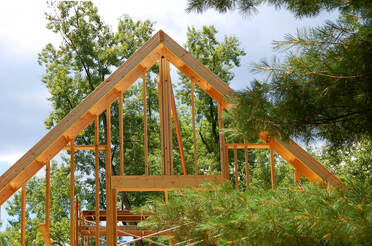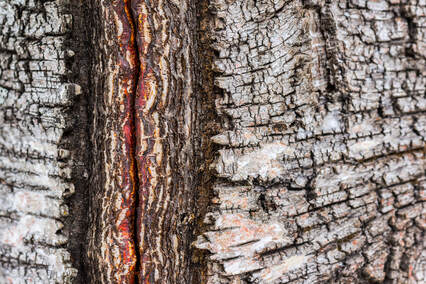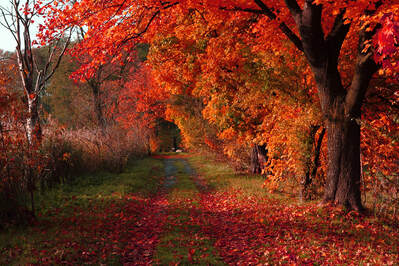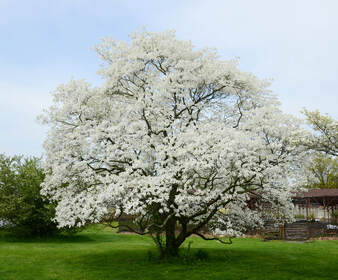 There are many likely ways in which current trees may be damaged while construction is going on and techniques for planning and assisting the avoidance of tree damage. Houses are frequently constructed near standing trees to take advantage of their value and visual appeal. Sadly, the activities done in construction projects can be fatal to nearby trees. Proper care and planning are needed to sustain trees. An arborist or can aid you in deciding which trees can be saved as well as call a Rochester stump removal company to get rid of the stump after the tree has been cut down. The tree contractor can also work with the builder on how to protect your trees when there is construction nearby. Receiving Advice Not all trees on your property can or should be saved. Your arborist can examine the structural integrity and health of your trees and suggest a way to preserve and protect the right ones. When deciding which trees to keep, think about the age, condition, size, and location of every tree. A tree contractor can instruct you in which trees are more sensitive to grade changes, root damage, and compaction. Planning Your tree expert and home remodeler have to work together in the initial planning phase of construction. Sometimes little changes in the location or dream house design can make a huge difference in whether a tree will survive. Other construction techniques can be discussed, like bridging over the roots instead of a normal walkway, if there’s limited space. If utilities can’t be re-routed away from trees, less destructive trenching installation techniques and tunneling are available. Establishing Barriers Repairs for construction damage is limited, so it is imperative that trees be safeguarded from harm. Set up durable fencing around every remaining tree, far away from the tree trunk as possible to deliver above- and below-ground security. Keeping Good Communication Communicate your goal explicitly with your remodeler, subcontractor, and tree specialist. Construction damage to trees is usually irreversible. Check out the site at least once a day if you can. Your dedication will pay off as people learn to take your requirements seriously.  Closeup of damaged birch bark Closeup of damaged birch bark On a cool, sunny day, the sun heats the wood and bark of the tree, making them expand. At night when the temp rapidly drops, the bark cools faster than the wood underneath, making the bark crack vertically as it shrivels over the expanded wood. This is most likely to happen on trees with cuts that have already deteriorated the bark, mainly if they are trees with thin bark or young trees. These cracks are never fatal to the tree and can be fixed. Subzero weather is no one’s favorite time to inspect for issues in the landscape. Often, we don’t see an injury that happens in the wintertime until the springtime. Below zero temps can produce some distinctive issues for landscape tree. One such issue, frost cracks, can severely harm trees. Very low temps in Rochester in the winter can leave trees with vertical cracks. These openings, called frost cracks, can go deep into the wood of a tree. Specific trees tend to be more susceptible to this ailment. It is usually seen in sycamores, but it also happens in apples, maples, horse chestnuts, willows, cherries, walnuts, and lindens. What are the reasons for frost crack in trees? Frost cracks are typically found on trees that are out in the open where the sun shines right on the bark. Cracks are first started in the wintertime when the sun heats the bark and inner wood on the west or south side of the tree, particularly on young trees with thin bark. As the sun is hidden by the clouds or goes down, the temperatures drop rapidly producing shrinkage in the bark while the interior wood takes a long time to contract. This uneven contraction or shrinkage between the interior wood and bark causes the bark and the wood directly below the bark to break. Some professionals at stump removal companies in Rochester believe it from water shifting out of cells and freezing when the temperature suddenly drops. The wood near the surface dwindles as water is lost rapidly while the interior wood isn’t affected. The abrupt change produces pressure between these two zones causing wood cracking. Tip Make your trees less likely to get frost cracks by using accurate pruning methods and steering clear of physical damage to the tree like lawn mower collisions.  Red Oak Red Oak Trees don’t grow shade overnight and it can take years for a good shade tree to develop. However, some trees flourish quicker than others. Below are a couple of trees that grow fairly quickly. Below are five trees that are perfect for the New York area. Northern Red Oak The Northern Red Oak is a good shade tree, and with a growth rate of two feet per year, you won’t have to wait a long time to lounge under its canopy. It’s also famous for vivid red fall color. Hybrid Poplar This is one of the most widely recommended quick-growing trees. It can grow over seven feet per year. You can practically see it grow. At maturity, it reaches close to 50 feet. Autumn Blaze Maple The name says it all. This is a fall beauty with vibrant orange-red leaves. The Autumn Blaze is a union of two prominent trees, the silver, and red maples. River Birch Best known for its unique cinnamon-colored curling bark, the river birch is a landscape splendor. While it grows along river banks, it can also w1`develop in landscapes, providing expanding branches for shade. Tulip Tree If you love little buggers, this tree is for you. The nectar entices hummingbirds in the flowers and rabbits, and squirrels dine on the seeds. While numerous trees do best with fall planting, the tulip tree doesn’t. This baby is for springtime planting. Time to Plant These Fast-Growing Trees Your newly planted tree wants rain and mild temps. Also, it needs time for the roots to get cozy before the heat and dryness of summer or the brutal cold of winter comes. This means that early fall and spring are typically the top planting seasons. Tree Planting Reasons Need shade? Or you need an old stump gone to plant your new tree? A Rochester stump removal business can help. Our professional tree experts will help you pick the perfect tree for your yard. Our team ensures the planting is performed correctly. Planting trees are a life-long investment. That’s why extra care and preparation is necessary for assessing the soil quality, local climate and other things that can affect your new trees.  Dogwood Tree Dogwood Tree Stroll through a Rochester nursery and view all the fruiting, shaded, and flowering treasures you can buy is pure bliss. As you’re choosing the right tree for the right spot, think about how massive that tree will grow. But remember to consider how far its roots will expand as well. If there are other things, such as walkways close to your planting area, there are trees that don’t have invasive roots for a small yard. Here are the advantages of these trees and find the one that’s best for you. Trees with Roots That Don’t Spread Tree roots like lots of water! Sometimes that makes trees move underground structures, such as sewer lines and water tanks. Also, sidewalks, driveways, and homes are in danger of becoming damaged when roots grow and spread under them. Non-invasive root systems are less likely to bother sewers or sidewalks. Plant a tree with non-invasive roots to resolve issues created by expanded roots. Don’t forget to plant at the right time of year. If you need an old stump gone before you can plant a new tree, contact a stump removal company in Rochester. Adams Crabapple: A vivacious dark red-colored apple tree that’s particularly resistant to the usual apple tree diseases such as apple scab and fire blight Cornelian Cherry Dogwood: A slow-growing tree that can be planted as a large shrub or small tree and has lots of soft yellow flowers Pawpaw: A tropical tree with big green fruit that tastes like peach or banana Kousa Dogwood: An ornamental tree that grows reddish-pink fruits and grows white leaves in the springtime that resemble flower petals Amur Maple: A small tree with flaming red fall color American Hornbeam: A birch tree that’s native to Chicago and flourishes perfectly in shady landscapes Trident Maple: A shade tree that’s perfect for curbside locations or patios and accepts a vast assortment of soil types Chinese Pistache: A mid-size tree with dark green leaves and small flowers that thrive ideally in drought conditions Southern Sugar Maple: A short-spreading maple tree with yellow autumn color and clusters of little hanging flowers Red Tip Photinia: A shade tree with red leaves with a beautiful round canopy and white flowers that also endure dryness and heat |
AuthorWrite something about yourself. No need to be fancy, just an overview. Archives
December 2020
CategoriesAll Insects & Diseases Questions & Answers Tools & Safety Trees & Landscaping Tree Stump Basics |
- Home
- Services
- About
- Contact
-
Service Areas
- Rochester NY Stump Removal
- Brighton Stump Removal
- Chili Stump Removal
- Churchville Stump Removal
- East Stump Removal
- Fairport Stump Removal
- Farmington Stump Removal
- Gates Stump Removal
- Greece Stump Removal
- Henrietta Stump Removal
- Irondequoit Stump Removal
- North Gates Stump Removal
- Parma Stump Removal
- Penfield Stump Removal
- Perinton Stump Removal
- Pittsford Stump Removal
- Victor Stump Removal
- Webster Stump Removal
- Blog
- Home
- Services
- About
- Contact
-
Service Areas
- Rochester NY Stump Removal
- Brighton Stump Removal
- Chili Stump Removal
- Churchville Stump Removal
- East Stump Removal
- Fairport Stump Removal
- Farmington Stump Removal
- Gates Stump Removal
- Greece Stump Removal
- Henrietta Stump Removal
- Irondequoit Stump Removal
- North Gates Stump Removal
- Parma Stump Removal
- Penfield Stump Removal
- Perinton Stump Removal
- Pittsford Stump Removal
- Victor Stump Removal
- Webster Stump Removal
- Blog
Search by typing & pressing enter

 RSS Feed
RSS Feed